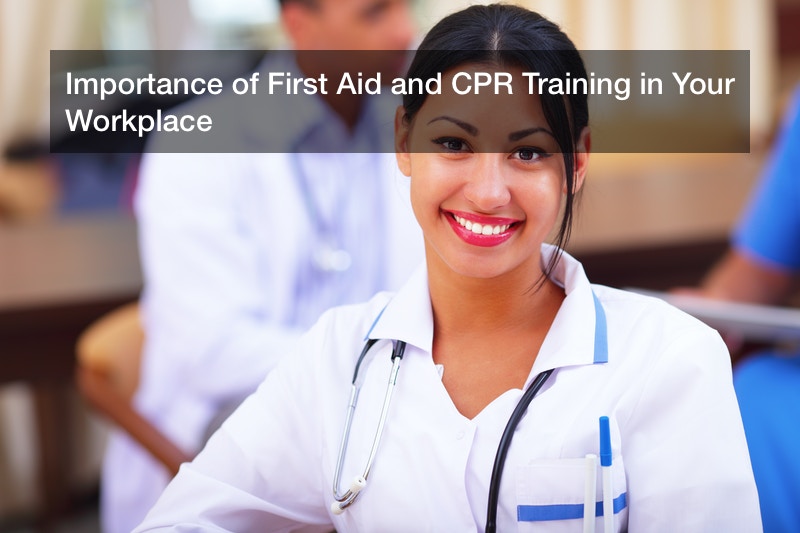
The overall well being of employees is an often overlooked way of improving the profitability of a company. It does not matter whether they work in a low-hazard or high-hazard surrounding; employees come across different risks. From bleeding, shocks, bites, and stings, burns to other medical emergencies, these are just some of the many emergencies that may be encountered in your workplace.
If your employees are not trained on the best ways to handle such injuries, then injured coworkers may be left unattended until help or ambulance arrives. Research shows that if first aid or CPR is not administered immediately, the victim’s survival chances reduce by 7% for every delayed minute. As a result, the condition of the victim may become worse, or their injuries become more debilitating. And this can lead to higher medical costs and low productivity.
So instead of hoping that someone in your company has basic first aid training or knows CPR, you can offer the program to your employees. Emergencies and injuries are a matter of “when” and not “if” they happen.
Essential Elements of First Aid Training
Establishing an effective first aid training and CPR response in your organization involves three essential elements.
First, you need to identify the importance of adopting a first aid and CPR program in your workplace. As an employer, you need to recognize this as your responsibility. You need to assess your entire workplace to identify hazardous sites or work processes that could injure employees. For instance, you can consider exposure to poisonous substances, falls, and dangerous equipment. Always ensure you put your evaluation into writing.
Second, examine the availability or location of a health center from your workplace. This means that if you cannot access emergency response within four minutes, it’s recommended to have at least a trained employee in CPR and first aid in every shift. Although there is no set number of employees that should be trained, a timely response can make a huge difference.
Lastly, always ensure that first aid supplies are readily available. According to OSHA (Occupational Safety and Health Administration), the kit should have adequate content for small companies or work sites. On the other hand, large and multiple operations should have additional first aid kits, equipment, and maybe even extra supplies. You also need to examine the kit regularly to ensure that it has all the needed supplies.
How Can Your Company Benefit From First Aid and CPR Training?
1. Tailored Classes Depending Your Industry
First aid programs are tailored depending on your workplace, financial capability, industry, and risk management strategy.
For instance, a first aid and CPR training program for a factory or construction site differ from a program for a large office. Adopting a program that meets the specific needs of your business can help ensure that the training is effective, focused, and current.
2. Boost Employee Morale
Providing basic life support class in your workplace can be used as a superb team-building activity and morale booster. Boosting employee morale is an essential aspect of every business. High morale can result in positive results, which can lead to improved productivity.
3. It is a Long Term Investment
Funding CPR classes Vancouver, WA can be a primary concern for any employer. But you need to stop looking at first aid and CPR classes as an expense. Instead, think of it as an investment. You are investing in the health and safety of your employees, who are your key assets. Furthermore, you have already invested more time and resources to get them where they are. So if anything happens to any one of them, you would repeat the same process once more.
First aid and CPR certification course is a crucial element in every company. In case of an emergency, your employees will know exactly what to do, how to conduct it, and the person in charge. Proper first aid training also meets OSHA requirements and fosters goodwill among your employees since they see that their company provides a healthy and safe environment for them to work in.
